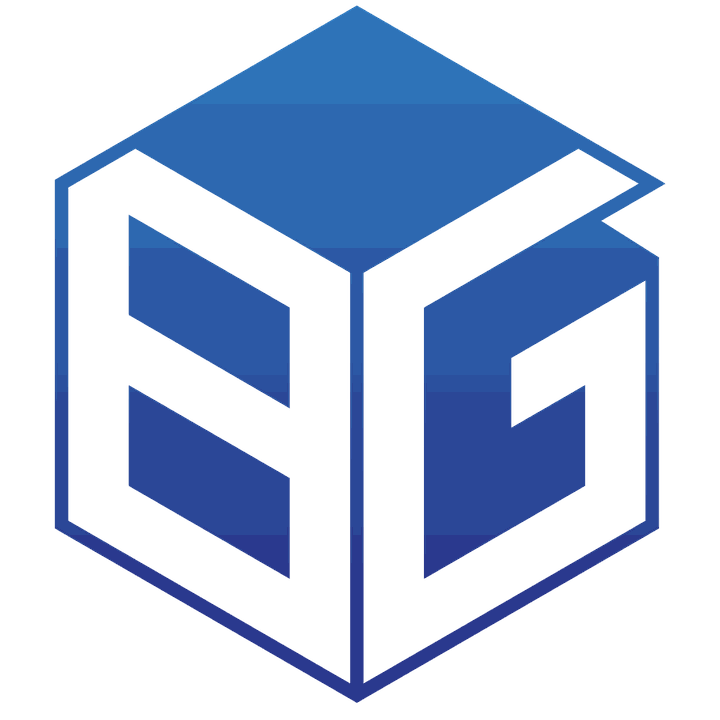
The market is experiencing steady growth, with an increasing number of on-chain tools that immensely benefit users.
Cryptocurrency operates on an on-chain system, emphasizing the essentiality of acquiring proficiency in these tools.
This article aims to categorize on-chain tools based on their types and purposes, thereby facilitating users’ comprehension of their respective applications, advantages, and limitations.
Blockchain Explorer tool group
To obtain comprehensive information about a blockchain, it is imperative to utilize blockchain explorer tools. A blockchain explorer, also known as a block explorer, is a vital tool that enables users to search, investigate, and analyze various data pertaining to the blockchain. Each blockchain explorer operates differently in terms of data extraction, thereby granting users access to diverse types of data. This may encompass information concerning tokens, holders, contracts, wallets, DEX exchanges, network index data, etc. It is important to note that each blockchain possesses its own unique explorers, meaning that it is not feasible to search for BNB Smart Chain information on an Ethereum explorer and vice versa. The features of explorers can differ based on the characteristics of a particular blockchain, resulting in dissimilar explorer types. For an understanding of how to effectively navigate standard block explorers and answers to frequently asked questions regarding the utilization of this tool, please consult the accompanying article.
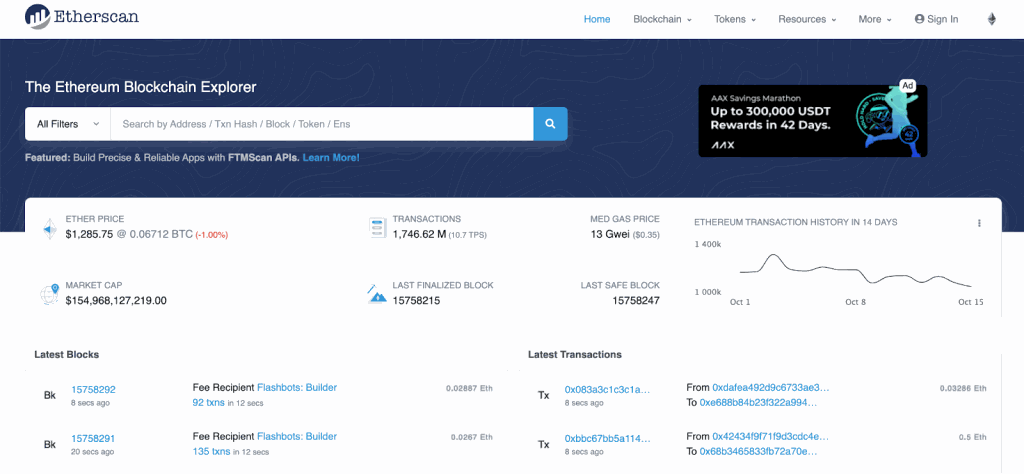
Etherscan, the blockchain explorer for Ethereum, stands out as the most prominent platform in terms of usage and popularity. It serves as a comprehensive source for all Ethereum-related information. Etherscan enables users to effortlessly verify token information, examine smart contracts, and monitor on-chain transaction activities, among other valuable utilities.
Advantages
- Offers a diverse range of information, catering to basic and advanced needs.
- Serves as an essential tool for gaining insights into the Ethereum blockchain.
- Provides free and unrestricted access to all users.
- Encompasses numerous functions to enhance user experience.
- Seamlessly integrates with other tools, facilitating interoperability.
Disadvantages
- Certain explorers lack statistical or network overview features, limiting their functionality to wallet search and transaction tracking.
Interoperability with other tools
- As a foundational tool, Etherscan can be effectively combined with various on-chain tools, including but not limited to other blockchain explorers.
- For instance, users can copy the token address from Etherscan to check its price on Coingecko. Similarly, copying a wallet address to Etherscan allows users to access detailed transaction information on Nansen.
Similar tools: BscScan, Arbiscan, Snowtrace, etc.
Data query tool group
This group comprises a collection of tools that enable users to query blockchain data, subsequently gathering and utilizing the gathered data for analysis.
Among these tools, it is imperative to highlight Dune Analytics, a project that has successfully secured nearly 80 million USD in capital.
Dune Analytics is a beloved blockchain data analysis and query tool within the community.
Users have the ability to leverage the project’s tools to access comprehensive information regarding blockchain networks, DeFi protocols, and even NFT collections and marketplaces.
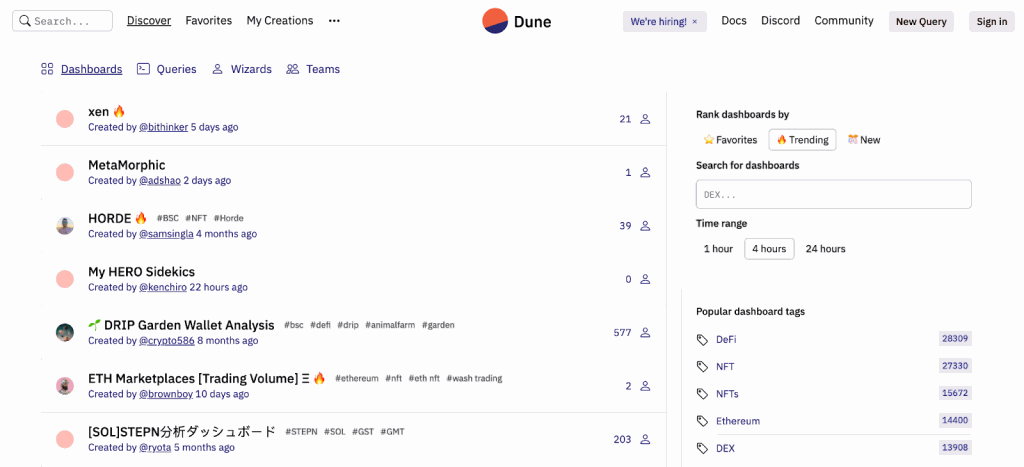
The data collected can be effectively represented on charts provided by Dune. A distinguishing feature of Dune is that it does not directly provide data results but rather encourages community members to share, comment, and appreciate each other’s findings. As a result, Dune has received an exceptional response from the community. To stay updated with the latest and most valuable dashboards, you can visit the Discover section on the project homepage or follow Dune Analytics on Twitter, where the project recognizes high-quality products on Dune weekly.
Advantages
- Dune adheres to the vision of Web3, where data should be accessible to all. Any individual can access Web3 data.
- It offers free comprehensive data, project information, operational status, and user data.
- Users can interact with each other.
- The performance tools provided are intuitive and easily accessible.
Disadvantages
- Creating a Dashboard on Dune requires users to have knowledge of SQL programming language, which may result in situations where users desire information but lack the necessary Dashboard.
- The number of supported blockchains is limited, primarily focusing on Ethereum and Solana.
- While Dune can be integrated with other tools, due to its comprehensive nature, users often find it more convenient to rely on Dune for their information retrieval needs solely.
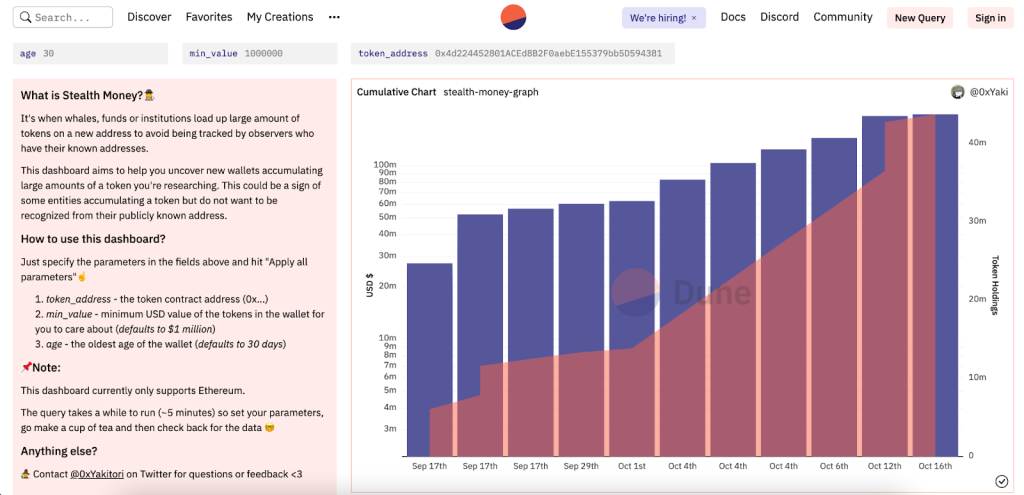
Similar tools
In addition to Dune Analytics, this group has other projects such as Footprint Analytics, Flipside Crypto.
BTC on-chain data pool
BTC is considered the dominant cryptocurrency in the market due to the significant impact of Bitcoin on the crypto industry, often referred to as the “King Coin”.
Conducting on-chain analysis of BTC-related activities and mining operations is of utmost importance.
When monitoring on-chain metrics related to Bitcoin, CryptoQuant is the most comprehensive data provider.
This tool enables users to understand the overall on-chain landscape of Bitcoin, including data on exchanges, recorded mining profits, hash rate, and information on the derivatives market.
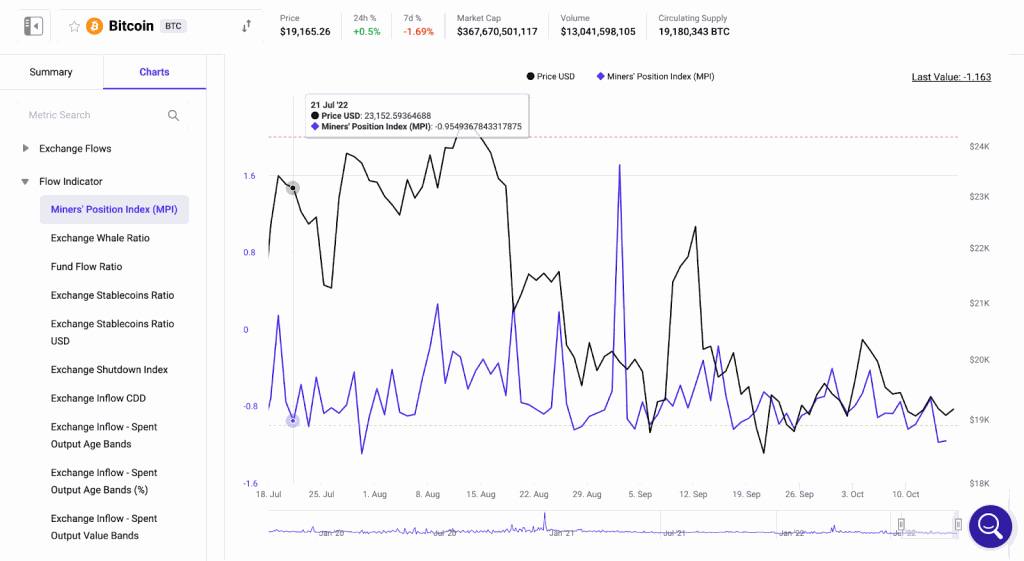
Regularly using this monitoring tool helps users gain insights into the activities of key players such as popular holders, traders, and miners, thereby obtaining a more comprehensive perspective. CryptoQuant is commonly used to analyze macro indicators to identify overarching trends and market sentiment.
BTC is the primary cryptocurrency asset monitored, featuring various indicators and charts. While CryptoQuant also facilitates tracking of stablecoins and altcoins, it should be noted that the data for these assets is not as extensive as that of Bitcoin.
Advantages
- Ability to mine various types of data.
- Real-time data availability.
- Customizable charting options based on preferred timeframes.
- Support for multiple assets.
- Detailed explanations of each indicator type.
Disadvantages
- Limited data availability for other asset classes (excluding BTC & ETH).
- The free version offers restricted tools, necessitating account upgrades for additional features.
- Interoperability with other tools: CryptoQuant is infrequently utilized in conjunction with other on-chain tools, as the provided data is already quite comprehensive. Instead, it is commonly integrated with macro-related data tools.
Similar Competitor
- Glassnode is a direct competitor to CryptoQuant; however, it does not offer real-time data for free accounts.
Bridge data group
For blockchains to transfer coins/tokens or even NFTs to each other, it is imperative to have the involvement of bridges that connect these blockchains.
Bridges serve as intermediaries in the financial transactions within the market, making it crucial for users to have knowledge about the bridges to identify cash flow trends.
Ethereum, being the blockchain with the highest focus on cash flow, frequently offers bridges to other blockchains with the intention of attracting cash flow.
To effectively monitor data pertaining to these bridges, users can utilize Uniwhales Bridge Tracker.
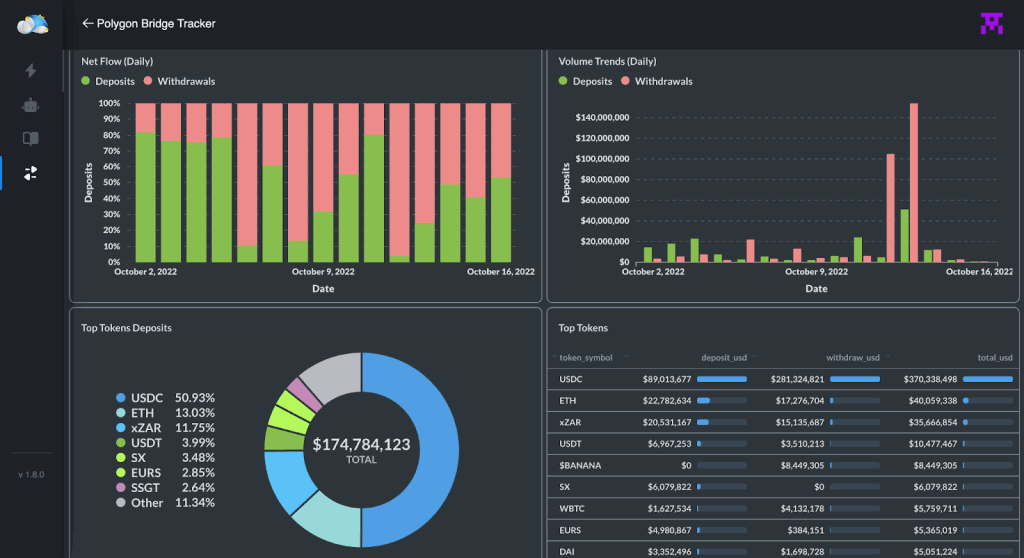
Polygon Bridge on Uniwhale
This tool assists users in comprehending bridge volume data, net deposit and withdrawal trends, bridged assets, and notable whale wallets with substantial bridge volume. By utilizing this valuable information, users can ascertain which blockchain is extracting funds from Ethereum, identify the most frequently utilized bridges, and monitor the activities of prominent whales on said blockchain. Currently, Uniwhale offers support for major blockchains connected to Ethereum, such as Polygon, Avalanche, Fantom, and Near, as well as notable Layer 2 solutions like Arbitrum and Optimism. Moreover, this tool allows users to search for information over extensive time periods.
Advantages
- Offers comprehensive information pertaining to major chain bridges.
- Presents data in user-friendly, visually intuitive graphs.
- Provides support for numerous blockchains.
- Access to the tool is free of charge.
- Facilitates long-term data storage.
Disadvantages
- While the data on Uniwhale is fairly comprehensive, the specific types of bridges calculated on each blockchain are not explicitly stated.
Integration with other tools
- Users have the ability to integrate Uniwhale with other tools seamlessly. For instance, when tracking wallets with a surge in bridge volume, users can employ platforms such as Etherscan or Nansen to examine and monitor said wallets.
- Additionally, Uniwhale can be effectively utilized in conjunction with the Dashboard Bridge Away on Dune Analytics.
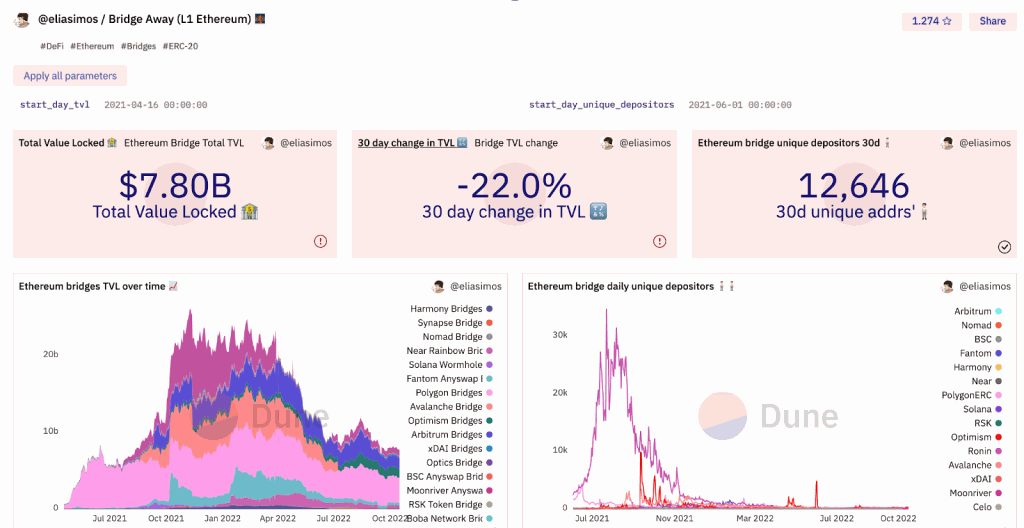
Ethereum Bridge
Aggregate data group
This collection of versatile tools offers users aggregated data on various aspects across multiple blockchains. Notably, Nansen stands out in this collection.
Nansen is a platform for analyzing blockchain data that goes beyond on-chain analysis and processing. It boasts a comprehensive database of wallet addresses.
The distinguishing feature of Nansen is its ability to assign labels to wallets based on on-chain activities, facilitating easier tracking of potential wallets.
Wallet labeling is Nansen’s most renowned function. Additionally, the project offers tools for token analysis, NFT Collection analysis, stablecoins, and other on-chain features.
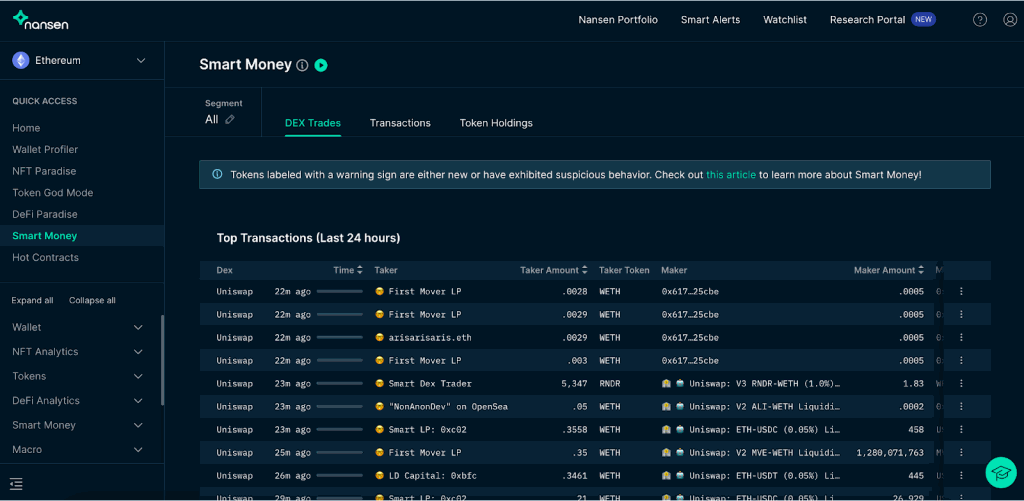
Smart Money on Nansen
Advantages
- Nansen offers a versatile toolkit with numerous useful features to aid users in finding important information.
- It supports a considerable number of blockchains, currently 10, and plans for further expansion exist.
- The wallet labeling function is unique and highly accurate, facilitating easy tracking of smart money.
Disadvantages
- The free version of Nansen has limited functionality, and users must subscribe and pay to access the smart money feature.
- The monthly subscription fee is relatively high.
Ability to combine with other tools
- Nansen is renowned for its comprehensive analysis of wallets and tokens, making it suitable for integration with other tools to enhance wallet and token analysis.
- Commonly used wallet/token analysis tools like DeBank, Etherscan, and Zerion can be effectively used alongside Nansen.
- Moreover, when tracking smart money wallets on Nansen, users can utilize the breadcrumb tool to visualize wallet activities easily.
Shows breadcrumbs of a wallet labeled Defiance Capital by Nansen
Similar projects
- Mining smart money wallets is a hot trend in the field of on-chain data, in addition to Nansen, there are new projects like Watchers and DeFinder that are also going in the same direction.
- In addition, regarding data analysis and synthesis blockchain, there is a famous project that everyone knows, DefiLlama.
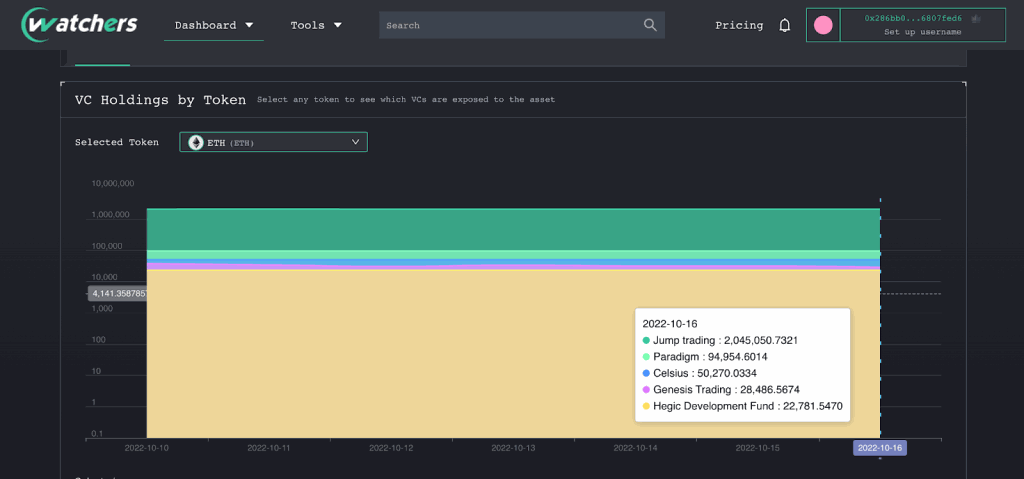
Conclusion
As the crypto market evolves and matures, on-chain tools have become an essential part of the investor’s toolkit. With the five on-chain tools discussed in this blog post, you can gain valuable insights, track market trends, and make informed investment decisions in 2023. By leveraging wallet explorers, block explorers, on-chain analytics platforms, DeFi analytics, token analytics, and staking and governance platforms, you can confidently navigate the crypto landscape and maximize your investment potential. Remember to conduct thorough research, stay updated with the latest developments, and always exercise caution while investing in cryptocurrencies.
